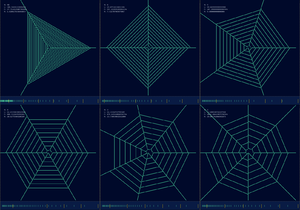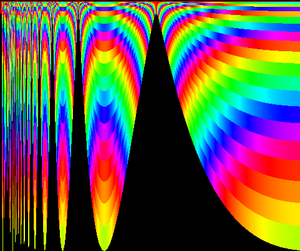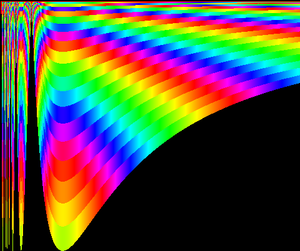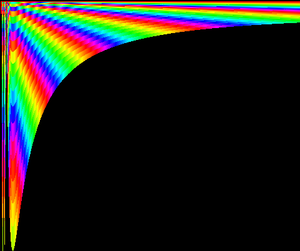Spiral tunings


Spiral tuning systems encompass the diverse configurations of a spiral polygonal chain, known as a "spirangle," utilizing the segment's length as source for pitch, either as string length or frequency.
These systems are non-periodic and possess an infinite range of possibilities. Among these configurations defined by their sides and segments, many prove musically practical, with potential for some to manifest as tangible instruments, such as spiral harps.
For instance, a six-sided spiral harp comprised of 120 segments spans approximately five octaves.
Each unique configuration unveils distinct chords and progressions, often showcasing geometric patterns.
Furthermore, the inversions of these tunings hold musical merit. Instead of the segment's length dictating string length, it determines frequency. However, this approach forfeits the utilization of the spiral as an instrument.
Another aspect influencing pitch is the spiral margin. This alteration also sacrifices the characteristic spider-web appearance and eliminates the possibility of a spiral harp.
Additionally, concerning the margin/radius property, the same algorithm used for calculating the spirals can be (unnecessarily) employed to generate equal-division systems. For example, when sides are 1, 1/2, or 1/4, etc., the angle is calculated with "PI*2/spiralSides," leaving the margin as the sole control for segment length increase.
For instance, a one-sided spiral with a radius of approximately 1.05946 (twelfth root of 2) generates a 12 equal division system.
An open-source, virtual playable spiral harp is accessible in https://kepleriandreams.github.io.


Construction:
Each tuning can be defined by the amount of sides and the margin. Starting from the center, and considering the segment's length as string length, the first being the shortest becomes the highest pitch, so in this case the tunings are defined inversely. Since they are non-periodic, the system sizes are infinite; it will depend on how many notes one wants to calculate. Most harp settings cover the audible range with fewer than 300 strings. The spiral can be of any size, a diameter, or scale property, while changing the length of the segments won't alter their relative lengths. We assign a frequency to the first segment, e.g., 8000 Hz, and the rest of the notes are calculated from it.
Algorithm for Calculating Segment Length:
Given:
- Radius [math]\displaystyle{ r = (z \times n) \times (m^n) }[/math] where 'z' is the constant size increment, 'm' is margin, and 'n' is the point's index, starting at 0.
- Angle [math]\displaystyle{ a = \frac{2 \pi}{s} }[/math] where 's' is the amount of sides of the spiral
The x-coordinate and y-coordinate of a point on the spiral are calculated using:
[math]\displaystyle{ x = r \times \cos(a) }[/math]
[math]\displaystyle{ y = r \times \sin(a) }[/math]
The distance between two consecutive points in Cartesian coordinates (x1,y1) and (x2,y2) is calculated using the Euclidean distance formula:
[math]\displaystyle{ d = \sqrt{(x_2 - x_1)^2 + (y_2 - y_1)^2} }[/math]


